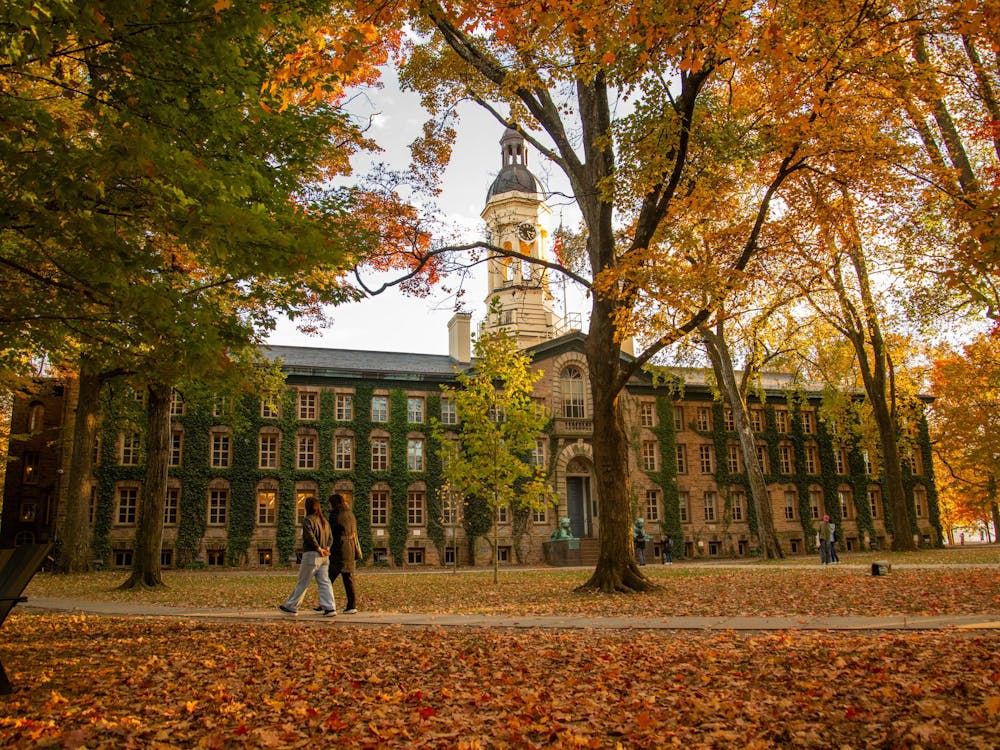Inquiring into its past is often a good way to find out why something is the curious way it is now. Take Princeton, for example. Why do we wear orange and black even when it is not Halloween? Why are cases of plagiarism and in-class cheating adjudicated by entirely different committees? Why do we speak of "precepts" and "preceptors," words unrecorded in this sense in the Oxford English Dictionary and ill-understood by our friends at other universities?
Still usually sporting Yale blue myself, I naturally find it pleasing that the task of writing a history of Princeton's last 100 years fell to another former denizen of New Haven, James Axtell, whose nearly 700-page book "The Making of Princeton University: From Woodrow Wilson to the Present" was published — by Princeton University Press, of course — earlier in the year. If I had gone to the beach this summer, I would have brought it with me; as it was, I read it anyway. I learned a lot, doubted certain things and recommend it to you. My copy of the previous official history of the University, Thomas Jefferson Wertenbaker's "Princeton, 1746-1896," published in 1946 by Princeton University Press, was given to me shortly before he graduated by Christopher Bradley '01, an overachieving classics major who will possess within the year both a D.Phil. in medieval English from Oxford and a J.D. from NYU. The next such book should appear about 40 years from now, and if any young overachiever reading this column ends up being the one to write it, I will expect a signed first edition.
Axtell, a distinguished historian at the College of William & Mary, suggests that there are "seven essential (though by no means only) features of a great university today": faculty, students, libraries and labs, graduate programs, an art museum, a university press and what he coyly calls "resources of sustained distinction" (i.e. cash). He spends at least one chapter on each of these, with the exception of the last, about which he states that he did not believe he could weave a good yarn. (My colleague Paul Krugman, who writes a column for a rival newspaper, should perhaps give this a try someday.) Of course, Princeton looks good in all these categories, but are they really "the" essential ones? Are the museum and especially the press quite as important as the others?
Before unwarranted hate mail piles up, let me make clear that I am not casting aspersions on our museum and our press. (Though Axtell's book has been poorly proofread and though I — to the embarrassment of my more sophisticated friends — preferred the naive jumble of Americana that used to greet art-lovers at the Museum to the studied cooler-than-thou-ness of the current entrance.) However, surely certain intangible qualities matter more: collegiality comes to mind, as does strong, visible leadership — and Princeton definitely has both. Unfortunately, there are also important tangible things that cannot easily be controlled. For example, the social and intellectual benefits of being in a vibrant city are undeniable, and while Princeton has a remarkable arts scene for its size, it seems unlikely that even another magician-colleague Paul — of Muldoon I sing — can turn it into New York.
There is, however, one big way in which Princeton has, in my view, been making a mistake that will be very hard to fix, literally digging itself into a hole. If you are not in the middle of a city, it is reasonable to play up the opposite, to capitalize on the idea of the university as Arcadia rather than hood. But building, building and building some more — at a pace made necessary in part by the controversial move to admit more students — means that there is increasingly little green, open space. The idyllic campus I started teaching at not nine years ago has undergone remarkable physical transformations and in some philosophical sense perhaps no longer exists. I have nothing against new architectural projects per se (but three cheers to Tony Grafton for his column of last Monday about the surprisingly poor quality of many of our buildings) and certainly understand why Princeton needs to maintain competitive facilities. But while little Prospect Garden remains with us, that happy slope that once was from Ivy Lane down to Fine Tower has turned into the foundations of a postmodern science library and that romantic bench overlooking what used to be tennis courts is well on its way to becoming the post-post-Gothic Whitman College. I miss them. Joshua Katz is a professor in the Department of Classics, Senior Fellow of Forbes College and the John Witherspoon Bicentennial Preceptor. He can be reached at jtkatz@princeton.edu.







